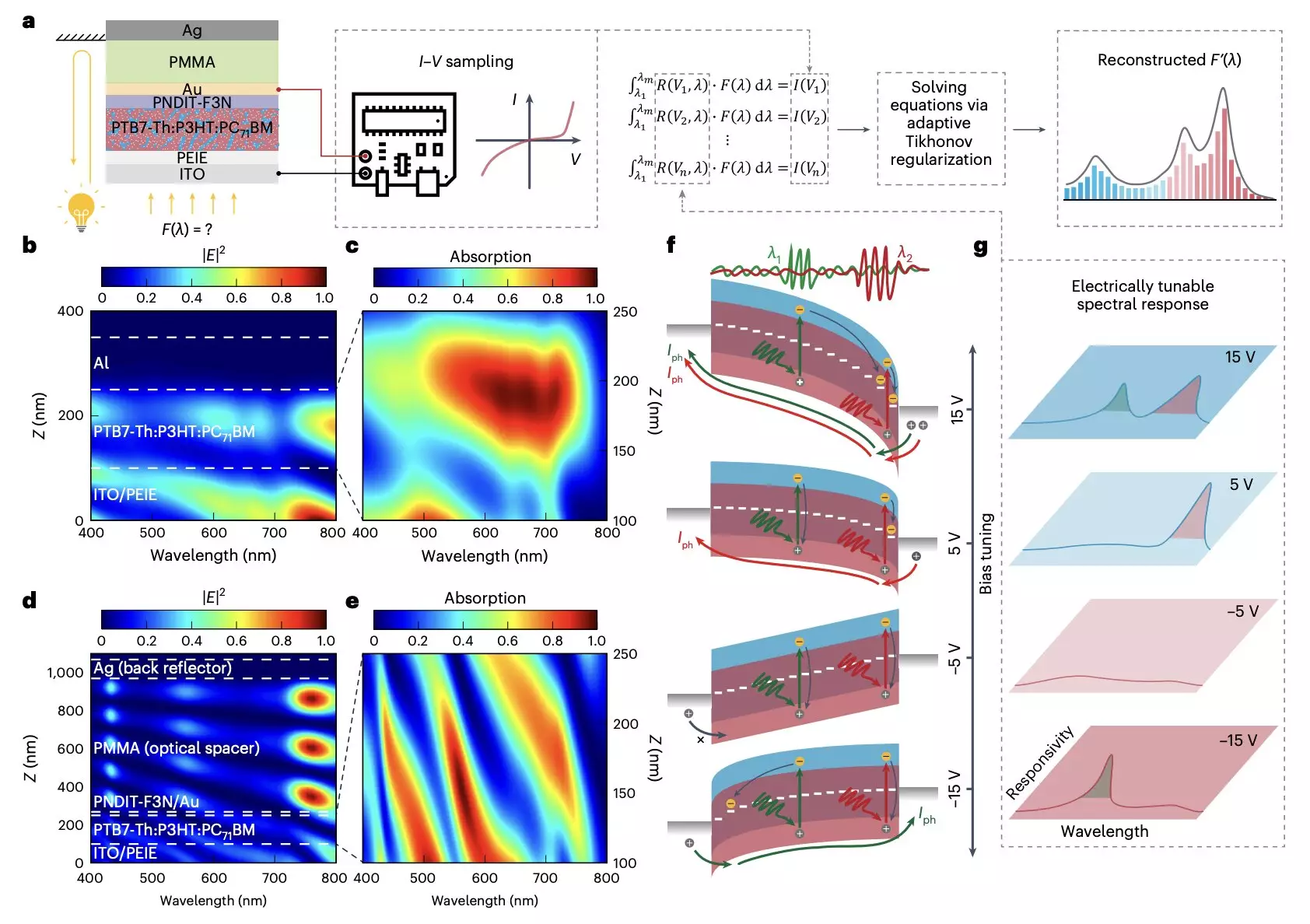Optical spectrometers have long been recognized as valuable instruments in various fields, from medical diagnosis to material characterization. However, traditional spectrometer designs are often bulky and expensive, limiting their widespread use. In recent years, efforts have been made to develop more compact and affordable optical spectrometers that can be easily deployed on a large scale.
Researchers at the Chinese University of Hong Kong and other institutes in China have recently introduced a new micro-sized, portable, and cost-effective optical spectrometer. This alternative spectrometer is based on an organic photodetector with a bias-tunable spectral response, offering a novel approach to miniaturized spectrometer design.
Technical Breakthrough: The Photomultiplication-type Organic Photodetector
The key innovation in the design of this new optical spectrometer lies in the manipulation of the wavelength-dependent location of photocarrier generation in photodiodes. By utilizing a trilayer contact consisting of a transparent back contact, an optical spacer, and a back reflector, combined with a Schottky diode and an organic ternary bulk heterojunction, the researchers were able to create a photomultiplication-type organic photodetector (PM-OPD).
Computational Reconstruction and High-Resolution Operation
To analyze the data collected by the PM-OPD, a reconstruction algorithm was implemented, allowing for the computational reconstruction of an incident light spectrum from photocurrents measured under different bias voltages. This innovative approach enables broadband operation across the entire visible wavelength with a remarkable sub-5-nm resolution, surpassing the performance of traditional spectrometers.
The researchers conducted a series of tests to evaluate the performance of their miniaturized optical spectrometer, demonstrating its capability to operate across the entire visible spectrum regime with high resolution. Furthermore, they utilized the device to fabricate an 8 x 8 spectroscopic sensor array for hyperspectral imaging, showcasing its potential for diverse applications in research and medical practices.
Future Outlook and Implications
The development of this micro-sized and affordable optical spectrometer opens up new possibilities for advancing research and medical practices. By inspiring the creation of other similar technologies, this innovative approach could pave the way for a new era of compact and versatile optical spectrometers that enable groundbreaking discoveries and applications.
The emergence of compact and affordable optical spectrometers represents a significant advancement in the field of optical instrumentation. With continued innovation and development, these new technologies have the potential to revolutionize various industries and drive progress in scientific research and healthcare.


Leave a Reply